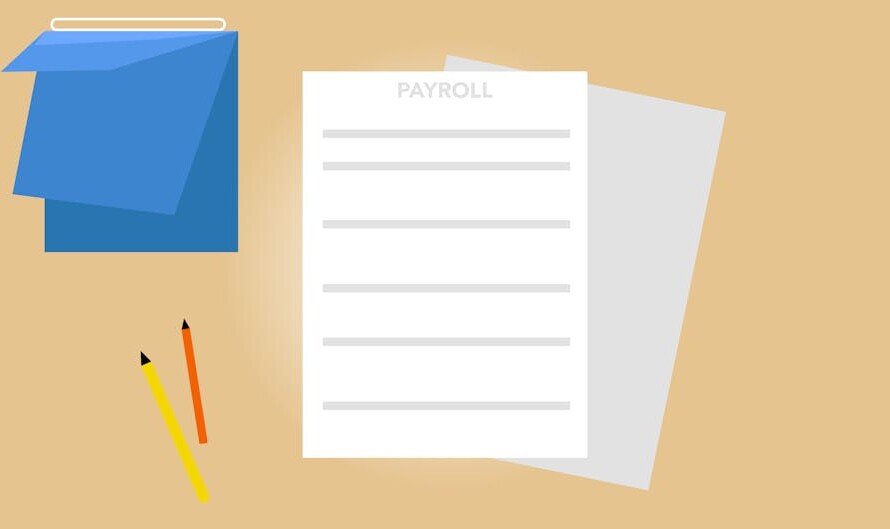MANAGING CASH FLOW
Cash flow is the lifeblood of any business. An Aging Accounts Receivable Report is an essential tool for monitoring this critical component. This report provides a clear snapshot of the amounts owed to the company and the duration they have been outstanding. By categorizing receivables by age—30 days, 60 days, 90 days, and beyond—businesses can identify payment delay trends and take proactive measures to ensure a steady flow of cash. This report is not just a ledger; it’s a map that helps maintain a healthy cash flow. Effective accounts receivable best practices include regularly reviewing and acting on this report to optimize financial health. Utilizing an AI business advisor can further enhance your cash flow management by providing real-time insights and predictive analytics.
IDENTIFYING LATE PAYMENTS
Timely identification of late payments is crucial for maintaining a positive cash flow and ensuring long-term viability. The Aging Accounts Receivable Report serves as an early warning system, highlighting overdue payments that could threaten financial stability. It allows businesses to prioritize follow-ups and collections based on the age of receivables, focusing resources where they are most needed. This systematic approach to collections can significantly reduce late payments and improve the company’s overall financial health. Implementing accounts receivable best practices like these can streamline operations and enhance cash flow management. Partnering with Bookkeeping Services Miami can ensure accurate tracking and timely updates of your accounts receivable.
ASSESSING CREDITWORTHINESS OF CUSTOMERS
Understanding customer payment patterns is key to managing credit risk. The Aging Accounts Receivable Report provides valuable insights into customer creditworthiness, distinguishing between those who consistently pay on time and those who do not. This information is crucial for making informed decisions about extending credit terms or setting credit limits. By analyzing the payment history detailed in the report, businesses can develop a credit policy that minimizes risk while fostering strong customer relationships. Following accounts receivable best practices ensures that your company can effectively manage credit risk and maintain financial stability. Engaging in Business Process Consulting can help you optimize your credit policies and procedures.
Mastering Monthly Aging Receivables Reports
CREATING THE AGING ACCOUNTS RECEIVABLE REPORT
The first step in developing an Aging Accounts Receivable Report is compiling a list of all outstanding invoices. This list should include the invoice number, date issued, due date, client name, and amount due. Once this information is gathered, you can begin categorizing receivables based on how long they have been outstanding. Typically, categories are divided into intervals of 0-30 days, 31-60 days, 61-90 days, and more than 90 days past due. Accurate data entry is a critical part of accounts receivable best practices. For growing businesses, adopting Business Scaling Strategies is essential for managing increased accounts receivable effectively.
CATEGORIZING RECEIVABLES
After gathering all necessary information, organize the outstanding receivables into the specified time intervals. This categorization helps determine which invoices are approaching or have passed their due dates, allowing for more targeted collection efforts. Accuracy in this step is critical as it directly impacts subsequent actions to manage your cash flow. Maintaining precise records is essential in accounts receivable best practices.
UPDATING THE REPORT REGULARLY
To be effective, the Aging Accounts Receivable Report must be updated regularly, ideally at least once a month, to reflect the most current data. Each time you update the report, reconcile it with your general ledger to ensure all payments are accurately recorded and outstanding balances are correct. Consistent updates are a cornerstone of accounts receivable best practices. Regular updates are also crucial for Financial Reporting for SMBs, ensuring transparency and accuracy in financial statements.

USING THE REPORT TO MAKE INFORMED FINANCIAL DECISIONS
An up-to-date Aging Accounts Receivable Report allows you to make informed decisions about your company’s financial situation. This report helps identify trends, such as which customers consistently pay late, enabling proactive measures to address these issues. It also serves as a crucial cash flow management tool, highlighting potential deficits caused by unpaid invoices. Utilizing the report effectively is a key aspect of accounts receivable best practices.
CASE STUDIES: SUCCESSFUL USE OF AGING ACCOUNTS RECEIVABLE REPORTS
One example of successful use of Aging Accounts Receivable Reports is a mid-sized manufacturing company facing cash flow issues due to late payments. By systematically reviewing their aging reports weekly, the company identified late payment patterns and proactively contacted clients before accounts became severely overdue. This led to a 30% reduction in accounts over 60 days late and significantly improved cash flow. This case highlights the importance of accounts receivable best practices in maintaining financial health.
Another example is a small retail shop struggling with inventory management due to irregular financial inflows. By using Aging Accounts Receivable Reports, the company identified customers who consistently paid late and adjusted their credit terms. They also offered early payment discounts to encourage timely payments. As a result, they saw a 20% increase in cash inflows within three months, allowing for better inventory planning and purchasing. Implementing accounts receivable best practices can lead to significant improvements in financial management.
Practical Tips for Implementing Effective Aging Reports
START WITH ACCURATE DATA ENTRY
Ensure that all invoices and payments are recorded accurately and promptly. This forms the foundation of an accurate aging report. Accurate data entry is fundamental to accounts receivable best practices. Utilizing Bookkeeping Services Miami can help maintain this accuracy.
SET CLEAR CREDIT POLICIES
Define credit terms clearly for your customers. This sets expectations and helps avoid confusion about payment due dates. Clear credit policies are a critical part of accounts receivable best practices. Consulting with an AI business advisor can optimize these policies based on data-driven insights.
REGULAR REVIEW AND ACTION
Plan regular reviews of your aging reports. Weekly or biweekly assessments can help you stay on top of emerging issues. Regular reviews are essential to accounts receivable best practices. Integrating Business Scaling Strategies can ensure your review process scales with your business growth.
USE AUTOMATED REMINDERS
Implement an automated system to send reminders to customers as their invoices approach the due date. This can reduce the number of late accounts. Automated reminders are a valuable tool in accounts receivable best practices.
TRAIN YOUR TEAM
Ensure your staff understands how to evaluate and act on the data in the reports. They should know how to follow up with clients effectively while maintaining positive customer relationships. Staff training is crucial for implementing accounts receivable best practices. Engaging in Business Process Consulting can provide your team with the skills they need.
By implementing these accounts receivable best practices and utilizing the Aging Accounts Receivable Report effectively, businesses can significantly improve their cash flow management and overall financial health.
Takeaways and Action Items
The Aging Accounts Receivable Report safeguards financial health by offering a snapshot of outstanding invoices, enabling proactive cash flow management and reducing late payment issues. Regular updates and precise categorization provide essential insights, enhancing cash management strategies and ensuring operational and growth readiness.
Analyzing payment patterns through Aging Accounts Receivable Reports assesses customer creditworthiness, adjusts credit policies, and strengthens customer relationships. Embracing these practices optimizes receivables management, improves cash flow, and reduces late payments. This strategic approach integrates aging receivables reports into broader financial strategies, ensuring sustained business success and growth.
| ✳️Schedule Setup. ✳️ For each category of overdue accounts (e.g., 30-60 days, 61-90 days), develop specific collection strategies. ✳️ Track and Analyze Result. | |
| ✳️Audit Current Processes. ✳️ Implement a double-check system for all invoices and payments entered into your accounting software. ✳️ Leverage Automated Software Validations. | |
| ✳️ Identify Software or Tools. ✳️ Customize Reminder Settings. ✳️ Monitor and Adjust Strategy. | |
| ✳️ Analyze the Aging Accounts Receivable Report. ✳️ Develop New Credit Policies. ✳️ Communicate Changes to Customers. | |
| ✳️ Identify Training Needs ✳️Develop a Training Program. ✳️Schedule and Conduct the Training Session. |


